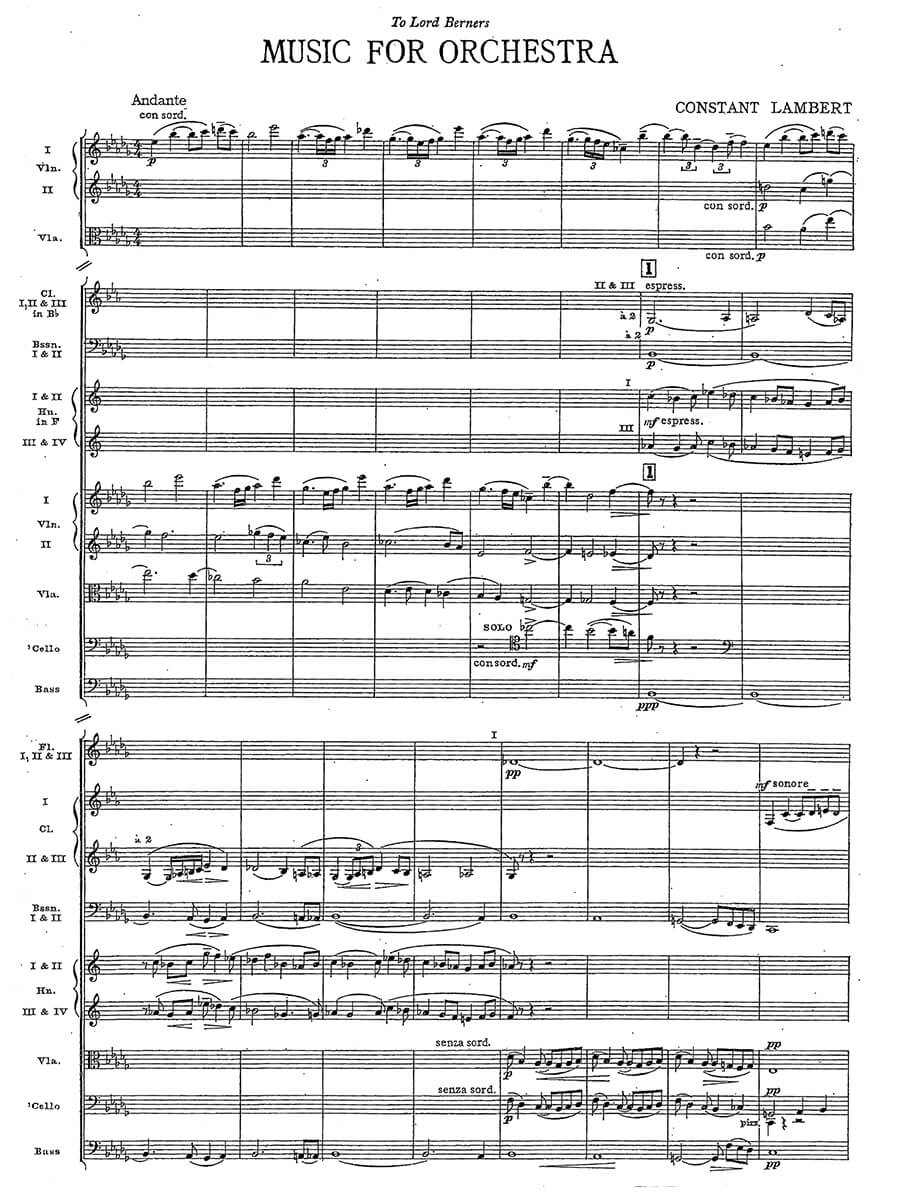Music for Orchestra
Lambert, Constant
18,00 €
Constant Lambert – Music for Orchestra
(b. London, 23. August 1905 – d. London, 21. August 1951)
Preface
Constant Lambert was a major figure in English musical life in the first half of the twentieth century. He was born in London and educated at the famous charitable school Christ’s Hospital in Sussex. He went on to study at the Royal College of Music, where his teachers included Vaughan Williams. In 1925, while still a student and aged only twenty, he received a commission for a ballet from the impressario Sergei Diaghilev, then in his final years. This was Romeo and Juliet, first performed the following year with choreography by Bronislava Nijinska, though Lambert fell out with Diaghilev over the production and at one point threatened to withdraw his score. A later ballet, Pomona, again with choreography by Nijinska but not for Diaghilev, was also successful. His enthusiasm for ballet led to his appointment in 1930 as resident conductor of the Camargo Society, which was formed as an English successor to the company of Diaghilev, who had recently died. This led to the Vic-Wells, later the Sadler’s Wells Ballet and finally the Royal Ballet. Lambert continued in this role until 1947 and thereafter as artistic adviser and guest conductor. For the ballet he made arrangements of music by many composers, notably Liszt, who was a particular favourite with him. He had a wide range of interests and friends in the arts, and he wrote a celebrated and very opinionated polemic, Music Ho! (1934), with the subtitle A study of music in decline, which criticized contemporary musical tastes but praised Sibelius, who was widely popular in England at the time. He married in 1931, but this marriage was not successful, because of Lambert’s infidelity and heavy drinking. It ended in divorce. He went on to have an affair with the ballet dancer Margot Fonteyn and then to marry again in 1947. He died young, of a combination of pneumonia and diabetes, exacerbated by his drinking.
Lambert composed less than he might have done because of his work as a ballet conductor. He was a minor composer, but one capable of great wit and charm as well as having a more serious side. His greatest success in his lifetime was the cantata for solo piano, chorus and orchestra, The Rio Grande (1922). This shows the influence of jazz, which greatly interested Lambert, and also features an imaginative use of percussion, using it to accompany the piano cadenza. Lambert came to resent its success as detracting from the attention due to his more serious works. As well as Music for Orchestra, which we shall come to, these included a Piano Sonata (1928-9), a Piano Concerto (1930-1) and a large-scale choral work, arguably his masterpiece, Summer’s Last Will and Testament (1936). Later ballets included Horoscope (1937) and his last work, Tiresias (1951), for which he had to enlist his friends to help with the scoring. …
Full preface / Komplettes Vorwort > HERE
| Score No. | |
|---|---|
| Edition | |
| Genre | |
| Size | |
| Printing | |
| Pages |
